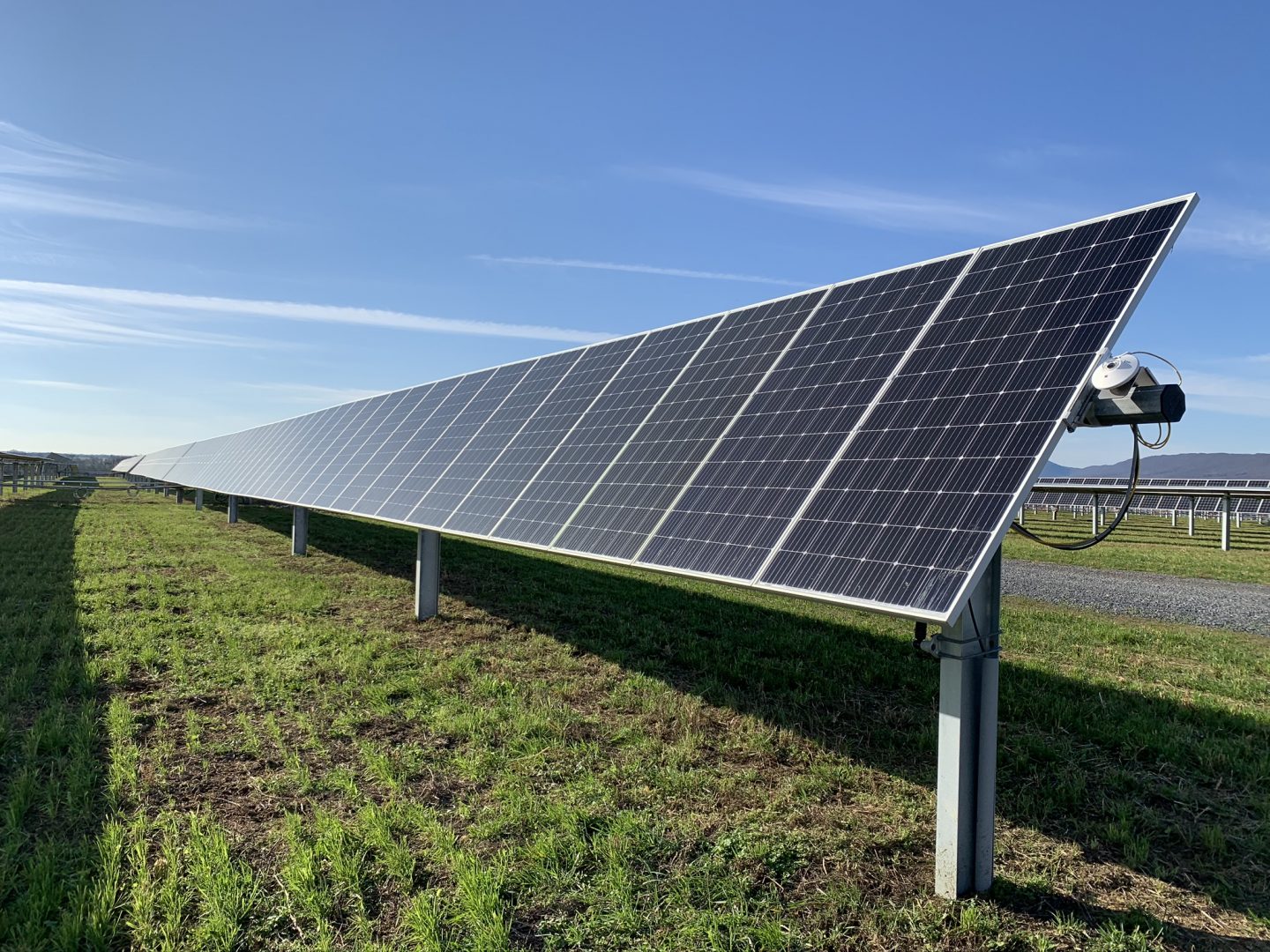
A solar array at the Nittany 1 Solar Farm is seen here in Lurgan Township, Franklin County on Nov. 24, 2020.
Rachel McDevitt / StateImpact Pennsylvania


A solar array at the Nittany 1 Solar Farm is seen here in Lurgan Township, Franklin County on Nov. 24, 2020.
Rachel McDevitt / StateImpact Pennsylvania

Rachel McDevitt / StateImpact Pennsylvania
A solar array at the Nittany 1 Solar Farm is seen here in Lurgan Township, Franklin County on Nov. 24, 2020.
A new report ranks Pennsylvania at the bottom of states in terms of renewable energy growth over the last decade.
Out of all 50 states and the District of Columbia, Pennsylvania only beat out Alaska in adding new wind and solar energy. The commonwealth also placed 50th in energy efficiency programs.
Other states known for oil and gas production were able to grow renewables at a much faster pace. The report says Texas is the leader. In 2022, Texas generated 91 times as much solar power as it did a decade before and three times as much wind.
The analysis from PennEnvironment shows the commonwealth had little growth in wind and tripled solar energy since 2013, with most of the growth happening in 2019.
The country as a whole doubled wind power and saw a 12-fold increase in solar in the same time frame.
Ellie Kerns, climate and clean energy associate with the PennEnvironment Research & Policy Center, said the group is advocating for a switch to 100% renewables by 2050.
“But in the last 10 years, we only brought online enough renewables to power less than 2% of Pennsylvania’s homes, and continue to purchase just 3% of our electricity from renewable sources,” Kerns said.
Doug Neidich, CEO of solar company GreenWorks Development, says one reason is that Pennsylvania met its goal for renewable energy two years ago.
“Our solar renewable energy certificate values–the only incentive that Pennsylvania offers for solar–have slid more than 30 percent in the last six months, and they’re going to continue to slide.”
Bills in the General Assembly that would update the state’s renewable energy goals and improve energy efficiency standards have not been called up. Utility companies in Pennsylvania must buy 8% of their energy from renewable sources under the state’s current standards.
Rep. Patty Kim (D-Dauphin) said a measure to help schools install solar that passed the Democratic-controlled state House this summer may have the best chance of becoming law of renewables-focused bills this session.
“[It’s] bipartisan. Everybody likes saving money. I think that’s the lowest hanging fruit in terms of which bill will be passed,” Kim said.
Solar energy growth in Pennsylvania has outpaced national growth in more recent years, according to Caitlin Connelly, an analyst with the energy research group Wood Mackenzie.
“When we look at just the residential solar segment, national growth has averaged 22.5% annually since 2018. Residential solar growth in PA since 2018 has averaged 32% annually on average,” Connelly said.
The group’s Q3 2023 Solar Market Insight report shows Pennsylvania is the 14th largest residential solar market in the U.S. based on total solar capacity as of the second quarter of this year. It also notes the state has seen a large uptick in utility-scale projects this year.
Pennsylvania has a long history of fossil fuel extraction, and Connelly said politics have been an obstacle to renewables growth in the state.
She points to community solar as an example. These projects would allow people who can’t install solar on their property to directly subscribe to a nearby solar field. Bills to allow it in the past few years have had bipartisan backing, but have not made it to the governor’s desk.
“Early optimism resulted in a pre-development pipeline of several hundred megawatts, so developers were hopeful the legislation would pass. However, there has been very little progress or momentum toward finalizing the bill over the last two years,” Connelly said.
The PennEnvironment report notes Pennsylvania performed better in electric vehicles, ranking 10th in additional EVs sold and 11th in EV charging stations added.
PennEnvironment is urging the legislature and Shapiro Administration to grow clean energy by taking advantage of tax credits and federal grants from last year’s Inflation Reduction Act.
StateImpact Pennsylvania is a collaboration among WITF, WHYY, and the Allegheny Front. Reporters Reid Frazier, Rachel McDevitt and Susan Phillips cover the commonwealth’s energy economy. Read their reports on this site, and hear them on public radio stations across Pennsylvania.
(listed by story count)
StateImpact Pennsylvania is a collaboration among WITF, WHYY, and the Allegheny Front. Reporters Reid Frazier, Rachel McDevitt and Susan Phillips cover the commonwealth’s energy economy. Read their reports on this site, and hear them on public radio stations across Pennsylvania.
Climate Solutions, a collaboration of news organizations, educational institutions and a theater company, uses engagement, education and storytelling to help central Pennsylvanians toward climate change literacy, resilience and adaptation. Our work will amplify how people are finding solutions to the challenges presented by a warming world.